Norse Goddess Sif Who Lost Her Golden Hair Due To Loki’s Evil Deed
A. Sutherland - AncientPages.com - Thor, the thunder god, had a beautiful wife, who was, along with the goddess Freya, the most attractive goddess in the Norse pantheon. Sif's characteristic feature was her golden hair, later replaced by a wig.
Thor loved his wife, who bore him two daughters, Lora and Thrud, famous for her strength.
Left: Goddess Sif. Image credit: Hedniska Tankar; Right: Loki cuts off all the hair of Sif. Katharine Pyle, 1930
Skaldic poetry and the Younger Edda by Snorri Sturluson, the "Skáldskaparmál" (the language of poetry), confirms that with his mistress (or his wife), Jarnsaxa, Thor had two sons, Magni and Modi. He was the stepfather of Ull (Uller), patron of winter, a handsome skier, skater, hunter, and an excellent archer. He is considered the son of Siv.
Sif was associated with the earth, passion, summer, and the sun. As responsible for the Norse people's crops, the goddess was also associated with vegetation and fertility. Her long golden hair was said to represent the long grass or the golden wheat covering the Northern summer fields.
Attested in the Poetic Edda (the Icelandic medieval manuscript known as the Codex Regius) and Snorri Sturluson's Prose Edda, Sif played a somewhat symbolic role in Norse mythology.
One story, however, is particularly well-known, and it tells about Sif's loss of her beautiful hair due to a mischievous prank of the trickster god Loki.
One day, Loki cut off all of Sif's long golden hair as she lay asleep. It was yet another of his bad jokes. When Sif woke up and discovered her loss in the morning, she was horrified and agitated.
As soon as Thor heard of Loki's betrayal, he was furious and threatened to break every bone in Loki's body.
Loki presents to Thor the newly-made gold-spun hair of Thor's wife, the goddess Sif. Gordon, Emma K (1910). The Gordon Readers, book 4
He knew that only Loki would have cut off Sif's hair.
'Well, what are you going to do about it?' demanded Thor. 'I'll replace it,' yelped Loki. I get help from the dwarfs. I promise to replace it.'
Loki Must Arrange New Hair For Sif
Seeing that Thor meant what he said, Loki swore to make up for his insult and immediately made his way to Svartalfheim, the underground home of the dwarves, excellent miners, and highly skilled craftsmen who extract and store precious metals and stones.
He would convince the dwarves to fashion Thor's wife a wig of golden hair.
The cunning god went to the cave of Ivaldi and his sons Brokk and Eitri and explained the reasons for his journey.
He begged them to make golden strands so natural that they would grow out of Sif's head, but he did not explain how Sif had lost her hair.
"Only you dwarfs are skilled enough smiths," Loki said, "and only the sons of Ivaldi could spin gold as fine as Sif's hair and imbue it with such magic that it will grow on her head."
"What will we get out of this?" was all that the sons of Ivaldi wanted to know.
"The thanks of Sif and Thor and the friendship of the gods," said Loki. "That counts for a great deal. And, above that, I give you my oath that I'll repay you in full measure when you have need of me."
The dwarves agreed to help him out of trouble, make a beautiful wig for Sif, and once again please the Aesir gods. The work was accomplished with their incredible magic. While the furnace was still hot, Loki persuaded Brokk and Eitri to make other magical treasures. One was the Skidbladnir, an indestructible ship that could be put in a pocket after folding, and the great spear Gungnir that flew straight to its target and never missed it.
Loki could carry these treasures back to the gods.
Sifs' new hair grew miraculously and was long and full, golden and sweet again. The story of Sif's hair being cut away symbolizes the golden wheat fields in the summertime that is shorn at harvest time.
In some interpretations, cutting off her golden hair, and shining in the sun, means the arrival of an infertile season or harsh wintertime.
Written by – A. Sutherland AncientPages.com Staff Writer
Updated on February 14, 2023
Copyright © AncientPages.com All rights reserved. This material may not be published, broadcast, rewritten or redistributed in whole or part without the express written permission of AncientPages.com
Expand for referencesReferences:
Elfwing J. Från ragnarök till ainulindalë
Davidson, Ellis H. R. Gods And Myths Of Northern Europe
Lindow J. Norse Mythology: A Guide to Gods, Heroes, Rituals, and Beliefs
More From Ancient Pages
-
 Is An Ancient Temple Dedicated To The Lioness Goddess Repit Hidden In The Cliffs Of Athribis?
Archaeology | Dec 10, 2024
Is An Ancient Temple Dedicated To The Lioness Goddess Repit Hidden In The Cliffs Of Athribis?
Archaeology | Dec 10, 2024 -
 Aristotle’s Influence On Education Of Alexander The Great – Historical Encounter Of Two Famous Men
Featured Stories | Dec 24, 2018
Aristotle’s Influence On Education Of Alexander The Great – Historical Encounter Of Two Famous Men
Featured Stories | Dec 24, 2018 -
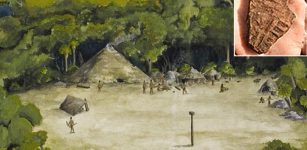 Uncovering The Lost Indigenous Settlement Of Sarabay, Florida
Archaeology | Jun 9, 2021
Uncovering The Lost Indigenous Settlement Of Sarabay, Florida
Archaeology | Jun 9, 2021 -
 Disbelief In Human Evolution Is Linked To Prejudice And Racism – Scientists Say
Human Beginnings | Apr 5, 2022
Disbelief In Human Evolution Is Linked To Prejudice And Racism – Scientists Say
Human Beginnings | Apr 5, 2022 -
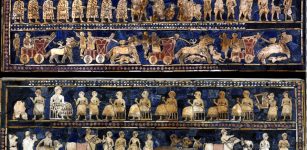 Image Of The Day: ‘The Standard of Ur – War And Peace’
Civilizations | Sep 7, 2015
Image Of The Day: ‘The Standard of Ur – War And Peace’
Civilizations | Sep 7, 2015 -
 Roman Treasures Unearthed At Ancient Site Of Tiel, Netherlands
Archaeology | Apr 2, 2017
Roman Treasures Unearthed At Ancient Site Of Tiel, Netherlands
Archaeology | Apr 2, 2017 -
 Ancient Chinese Version Of Quipu -Tradition Of Tying Knots Dates Back To Antiquity
Civilizations | Mar 15, 2017
Ancient Chinese Version Of Quipu -Tradition Of Tying Knots Dates Back To Antiquity
Civilizations | Mar 15, 2017 -
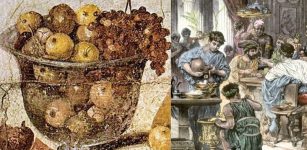 Citrus Was An Ancient Roman Symbol Of Status And Luxury
Ancient Symbols | Aug 23, 2017
Citrus Was An Ancient Roman Symbol Of Status And Luxury
Ancient Symbols | Aug 23, 2017 -
 Melusine: Charming Water Fairy In European Legend About Taboo And Broken Promise
Featured Stories | Jan 2, 2019
Melusine: Charming Water Fairy In European Legend About Taboo And Broken Promise
Featured Stories | Jan 2, 2019 -
 4,000-Year-Old Tomb Altóir Na Gréine Rediscovered By Folklorist In County Kerry, Ireland
Archaeology | Jan 24, 2024
4,000-Year-Old Tomb Altóir Na Gréine Rediscovered By Folklorist In County Kerry, Ireland
Archaeology | Jan 24, 2024 -
 Scientists Unravel Why Humans Used Tiny Flakes 300,000 Years Ago
Archaeology | Dec 15, 2022
Scientists Unravel Why Humans Used Tiny Flakes 300,000 Years Ago
Archaeology | Dec 15, 2022 -
 Study: Grinding Tools Were Once Used In Plant, Pigment And Bone Processing At Jebel Oraf Site, Saudi Arabia
Archaeology | Oct 6, 2023
Study: Grinding Tools Were Once Used In Plant, Pigment And Bone Processing At Jebel Oraf Site, Saudi Arabia
Archaeology | Oct 6, 2023 -
 Perforated Shells Were Used By Humans 120,000 Years Ago
Archaeology | Jul 10, 2020
Perforated Shells Were Used By Humans 120,000 Years Ago
Archaeology | Jul 10, 2020 -
 How Did Sea Level Rise Impact Human Groups During Mesolithic And Neolithic Periods?
Archaeology | May 20, 2022
How Did Sea Level Rise Impact Human Groups During Mesolithic And Neolithic Periods?
Archaeology | May 20, 2022 -
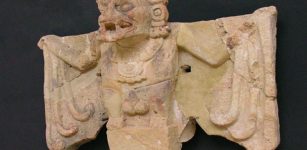 Camazotz: ‘Death Bat’ Vampire God In Ancient Maya Beliefs
Featured Stories | Jun 8, 2017
Camazotz: ‘Death Bat’ Vampire God In Ancient Maya Beliefs
Featured Stories | Jun 8, 2017 -
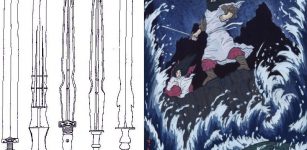 Sacred Regalia Of Japanese Emperor: Sword, Mirror And Jewel In Ancient Japanese Tradition
Artifacts | Sep 2, 2017
Sacred Regalia Of Japanese Emperor: Sword, Mirror And Jewel In Ancient Japanese Tradition
Artifacts | Sep 2, 2017 -
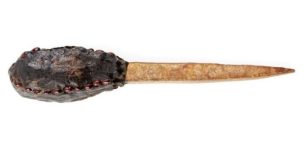 Tomography And Radiocarbon Dating Used To Examine Australian Aboriginal Knife
Archaeology | Jul 3, 2023
Tomography And Radiocarbon Dating Used To Examine Australian Aboriginal Knife
Archaeology | Jul 3, 2023 -
 Curious Alien-Looking Slit Gongs Figures From Vanuatu Allowed Villagers To Communicate
Ancient Traditions And Customs | Sep 24, 2018
Curious Alien-Looking Slit Gongs Figures From Vanuatu Allowed Villagers To Communicate
Ancient Traditions And Customs | Sep 24, 2018 -
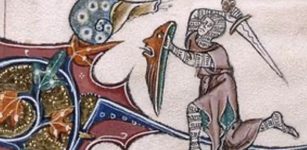 Why Are Medieval Manuscripts Full Of Doodles Of Snail Fights?
Featured Stories | Jun 17, 2023
Why Are Medieval Manuscripts Full Of Doodles Of Snail Fights?
Featured Stories | Jun 17, 2023 -
 Life Of Earliest Modern Humans In Europe Revealed By Excavations Conducted In Romania
Archaeology | Aug 24, 2022
Life Of Earliest Modern Humans In Europe Revealed By Excavations Conducted In Romania
Archaeology | Aug 24, 2022


